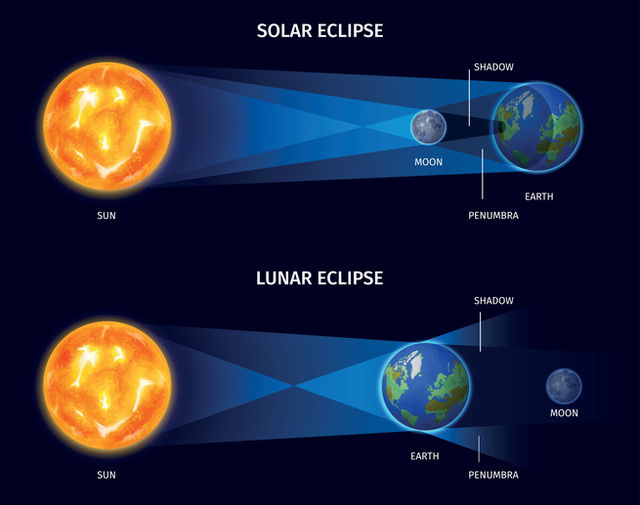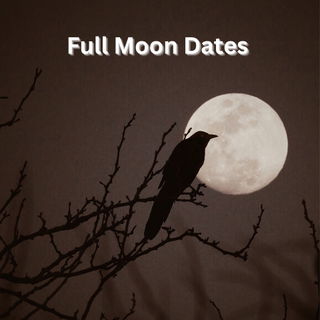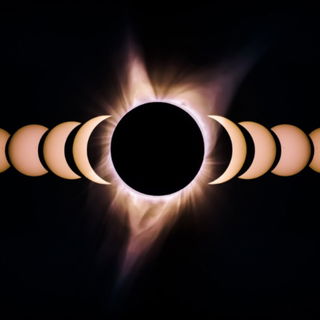In 2025 there will be two total Lunar Eclipses:
-
On March 14, 2025, a Total Eclipse of the Moon will be visible in North and South America, Europe, and Africa.
On September 7, 2025, a Total Eclipse of the Moon will be visible in Europe, Africa, Asia, and Australia.
What Is A Lunar Eclipse
A lunar eclipse happens when the Earth comes between the Sun and the moon, blocking the sunlight that is reflected on the Moon.
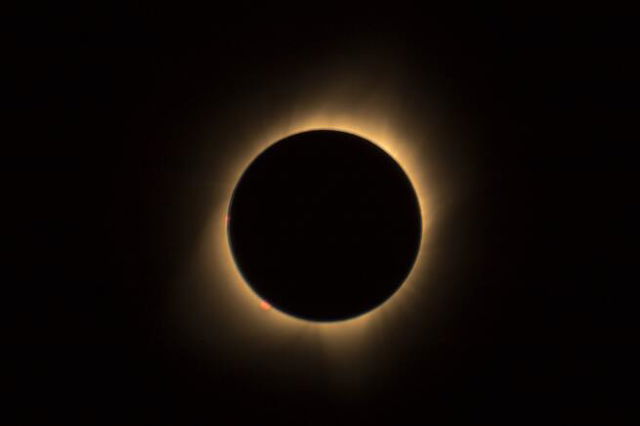
When the Sun, Earth, and Moon are aligned, the Earth casts a shadow on the Moon and obscures it, making it invisible for a few hours.
A Lunar Eclipse can be total, partial, or penumbral.
A Lunar Eclipse can only happen when there is a Full Moon, and it occurs at least twice a year.
Types of Lunar Eclipse
- Penumbral Lunar Eclipse : It is the least noticeable to the naked eye and happens when the Moon passes the Earth's penumbra or the outer side of the Earth's shadow. The only thing that happens is a slight dimming of the Moon's surface.
- Partial Lunar Eclipse: It occurs when only some portion of the Moon enters the darkest place of the Earth's shadow, the umbra.
- Total lunar eclipse: It happens when the Sun, the Earth, and the Moon are completely aligned, and the entire Moon is within the umbra. This completely obscures the Moon for those who live on the hemisphere of the Earth where it is nighttime.
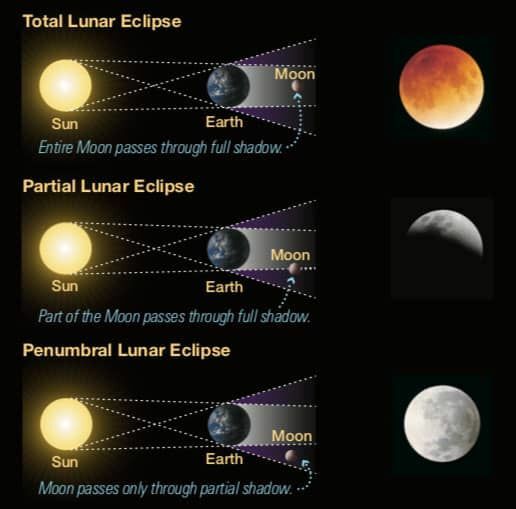
What Is a Blood Moon
Sometimes during a total lunar eclipse, the Full Moon turns red because of the Sunlight refracted through the Earth's atmosphere. This is often called a Blood Moon, although it is not its scientific name.
This light filtering phenomenon is called Rayleigh scattering, and it is the same astronomical mechanism that causes sunsets and sunrises to sometimes have a pink, orange, or red tint.
How To Watch A Lunar Eclipse
Lunar Eclipses are very easy to watch, and you can do it through the naked eye, in some parts of the world.
To observe a total or partial Lunar Eclipse, all you need are clear skies and an unobstructed view of the Moon.
For this, try to stay away from city centers and urbanized areas, as the artificial lights make it difficult to have a clear view of the sky. Rural areas have the best conditions to watch a Lunar Eclipse.
You'll also need to be on the night side of the Earth to be able to see the Lunar Eclipse.
While you don't need special equipment to observe the Lunar Eclipse, things like binoculars or a telescope can enhance your experience, as you'll be able to see the Moon's changes and features in more detail.
The Difference Between Lunar And Solar Eclipses
Eclipses are determined by the orbits of the Earth around the Sun and the Moon around the Earth. When these three celestial bodies align, we have a Lunar or a Solar Eclipse.
As explained, a Lunar Eclipse happens during a Full Moon, when the Earth passes between the Sun and the Moon, casting a shadow on its natural satellite and obscuring it.
A Solar Eclipse occurs during the New Moon, when the Moon passes between the Sun and the Earth, totally or partially obscuring the sunlight.
